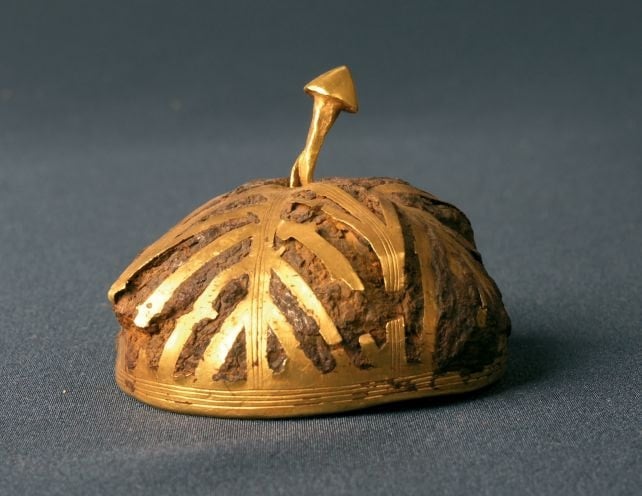Extraterrestrial metal discovered in 3,000-year-old treasure

The study, led by Salvador Rovira-Llorens of the National Archaeological Museum of Spain, revealed that metalworking may have been much more advanced than expected in Iberia 3,000 years ago. The results of the study were published last year.
The Villena Treasure is a collection of 66 items discovered in the Alicante region of Spain in 1963. It is considered one of the most important examples of Bronze Age goldwork in Europe. However, determining the exact age of the collection has become a difficult process due to two iron-looking artifacts within.
One of the objects is a small hemisphere thought to be part of a staff or sword hilt, and the other is a thick, torc-style bracelet. Archaeologists noted that the artifacts were unusual because of their iron content.
While the Iron Age began in the Iberian Peninsula around 850 BC, the gold objects in the Villena Treasure are known to date back to 1500-1200 BC. So how could these two iron artifacts be included in a Bronze Age treasure?
To solve this mystery, scientists conducted a mass spectrometry test on the artifacts to determine their nickel content. The results showed that these artifacts were made of meteoritic iron (originating from meteorites), not iron ore from the Earth's crust.

Meteoritic iron is known to have a much higher nickel content than iron found on Earth's surface. This is the strongest evidence yet that both artifacts from the Villena Treasure came from an extraterrestrial source. The processing of iron from meteorites between 1400 and 1200 BC revealed the advanced metalworking of the period.
The researchers acknowledge that it is difficult to draw definitive conclusions due to the extensive corrosion of the objects, but they believe that with the use of newer, more precise analysis techniques, the discovery could be supported by more solid evidence.
The work was published in the journal Trabajos de Prehistoria and made history as the first two artifacts made with meteoritic iron on the Iberian Peninsula.
SÖZCÜ






